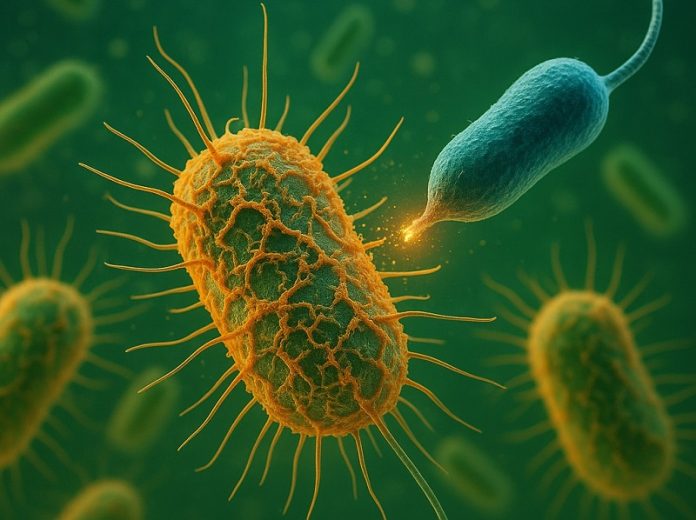
Amyloids, the sticky proteins linked to Alzheimer’s disease, may have a surprising role outside the human brain.
According to new research from the University of Colorado Boulder, these proteins also serve as armor for bacteria, helping them fend off attacks from predatory microbes.
Amyloids are known for clumping on nerve cells and contributing to neurodegenerative diseases. But in the bacterial world, they may be essential for survival.
The study, published in Nature, shows that bacteria use a type of amyloid protein as a protective shield, allowing them to survive attacks from other bacteria.
Lead researcher Aaron Whiteley, a biochemistry professor, says this discovery changes how we think about bacterial defenses.
“We found that bacteria all around us are using amyloids as a molecular suit of armor,” he said.
Understanding this could help scientists design better ways to fight harmful bacteria in hospitals and food production facilities—and even provide clues to how our immune system works.
The team focused on a predatory bacterium called Bdellovibrio bacteriovorus, or “Bdello” (pronounced Dell-O). Bdello is harmless to humans but deadly to other bacteria.
It invades bacterial cells, drains their nutrients, and moves on to its next target. Bdello is found in everyday places like showerheads, rivers, and even the human mouth.
Because of its ability to kill dangerous bacteria like E. coli, it’s being studied as a possible treatment for bacterial infections.
Until now, Bdello was thought to be nearly unstoppable. But Whiteley and his team wanted to know if any bacteria could survive a Bdello attack—and how.
They gathered a diverse collection of E. coli strains from unusual sources, including reptiles, hospital patients, and wild animals. When they exposed these strains to Bdello, about one-third of them survived.
Under a microscope, the researchers saw why: the surviving bacteria were covered in a protective layer of curli, a type of amyloid protein. Curli is similar to the amyloids linked to Alzheimer’s but serves a very different purpose in bacteria. It acts like a shield, making the bacteria harder to attack.
The study also found that curli plays a role in forming biofilms—tough layers of bacteria that stick to surfaces in hospitals and industrial settings. These biofilms are notoriously hard to remove and often lead to infections.
Whiteley now hopes to study how Bdello and similar bacteria might break through this amyloid armor. If scientists can uncover the enzymes or tools these microbes use to destroy the protective layer, they might apply the same methods to tackle antibiotic-resistant infections or even diseases like Alzheimer’s.
“In nature, when organisms fight, they evolve new strategies,” said Whiteley. “By understanding how bacteria protect themselves and how others break through, we could unlock powerful new ways to improve human health.”
If you care about Alzheimer’s disease, please read studies about vitamin D deficiency linked to Alzheimer’s and dementia, and strawberries can be good defence against Alzheimer’s.
For more health information, please see recent studies about foods that reduce Alzheimer’s risk, and oral cannabis extract may help reduce Alzheimer’s symptoms.



